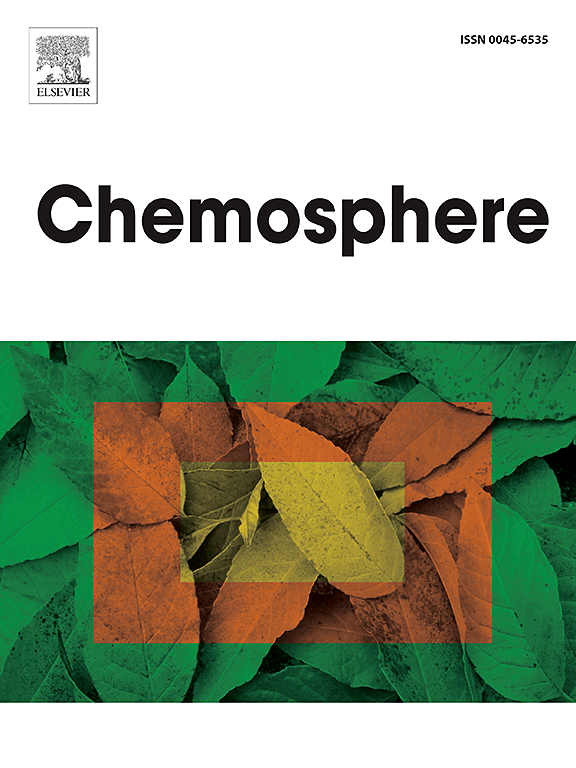Decoding nutrient dynamics in coastal aquifers: Machine learning insights into submarine groundwater discharge and seawater intrusion in south India
IF 8.1
2区 环境科学与生态学
Q1 ENVIRONMENTAL SCIENCES
引用次数: 0
Abstract
Coastal aquifers are vulnerable to natural and human-induced processes that impact their resilience and ecosystems. Submarine Groundwater Discharge (SGD) and Seawater Intrusion (SWI) play crucial roles in transporting nutrients and contaminants into coastal waters and threatening coastal aquifers, respectively. This study aims to characterize hydrogeochemical processes governing SGD and SWI using an integrated machine learning (ML) algorithm, overcoming limitations of traditional geochemical methods in analysing complex, nonlinear, and high-dimensional hydrogeochemical datasets. The ML framework, integrating statistical and geochemical analyses, was applied to Ramanathapuram and Rameswaram Island coastal aquifers. Spearman correlation analysis identified key indicators of seawater influence, anthropogenic inputs, redox reactions, dissolution, and ion exchange. Self-Organizing Maps (SOM) and Fuzzy C-Means (FCM) clustering revealed hydrogeochemical patterns in groundwater (GW) and porewater (PW). In GW, Group 1 (27 %) indicated pollution from agricultural NO3−, Group 2 (60 %) represented long-residence freshwater with high DSi and reduced NO3− under clay-layer redox conditions, and Group 3 (13 %) contained high-salinity GW impacted by SWI and saline traps. In PW, Group 1 (11 %) reflected fresh SGD with high DSi and NH4+, Group 2 (68 %) showed SW dominance in intertidal zones, and Group 3 (21 %) represented recirculated SGD enriched in salinity and nutrients due to ion exchange and desorption reactions. Factor analysis clarified hydrogeochemical drivers such as anthropogenic inputs, silicate dissolution, redox reactions, and SW interactions, while ionic ratios (Na/Cl, NO3−/Cl) and delta-analysis geochemically supported these findings. This ML-based approach enhances SGD identification and SWI assessment, offering a novel methodology for coastal aquifer management and ecosystem protection.
解码沿海含水层的营养动态:印度南部海底地下水排放和海水入侵的机器学习见解
沿海含水层很容易受到自然和人为过程的影响,从而影响其恢复能力和生态系统。海底地下水排放(SGD)和海水入侵(SWI)分别在向沿海水域输送营养物质和污染物以及威胁沿海含水层方面起着至关重要的作用。本研究旨在利用集成的机器学习(ML)算法表征控制SGD和SWI的水文地球化学过程,克服传统地球化学方法在分析复杂、非线性和高维水文地球化学数据集方面的局限性。将统计和地球化学分析相结合的ML框架应用于Ramanathapuram和Rameswaram岛沿海含水层。Spearman相关分析确定了海水影响、人为输入、氧化还原反应、溶解和离子交换的关键指标。自组织图(SOM)和模糊c均值(FCM)聚类揭示了地下水(GW)和孔隙水(PW)的水文地球化学模式。在GW中,第1组(27%)表示来自农业NO3−的污染,第2组(60%)表示在粘土层氧化还原条件下具有高DSi和减少NO3−的长期淡水污染,第3组(13%)包含受SWI和盐阱影响的高盐度GW。在PW中,组1(11%)反映了高DSi和NH4+的新鲜SGD,组2(68%)在潮间带显示SW优势,组3(21%)代表由于离子交换和解吸反应而富含盐度和营养的再循环SGD。因子分析明确了水文地球化学驱动因素,如人为输入、硅酸盐溶解、氧化还原反应和SW相互作用,而离子比(Na/Cl、NO3−/Cl)和地球化学三角洲分析支持了这些发现。这种基于ml的方法提高了SGD识别和SWI评估,为沿海含水层管理和生态系统保护提供了一种新的方法。
本文章由计算机程序翻译,如有差异,请以英文原文为准。
求助全文
约1分钟内获得全文
求助全文
来源期刊

Chemosphere
环境科学-环境科学
CiteScore
15.80
自引率
8.00%
发文量
4975
审稿时长
3.4 months
期刊介绍:
Chemosphere, being an international multidisciplinary journal, is dedicated to publishing original communications and review articles on chemicals in the environment. The scope covers a wide range of topics, including the identification, quantification, behavior, fate, toxicology, treatment, and remediation of chemicals in the bio-, hydro-, litho-, and atmosphere, ensuring the broad dissemination of research in this field.
 求助内容:
求助内容: 应助结果提醒方式:
应助结果提醒方式:


